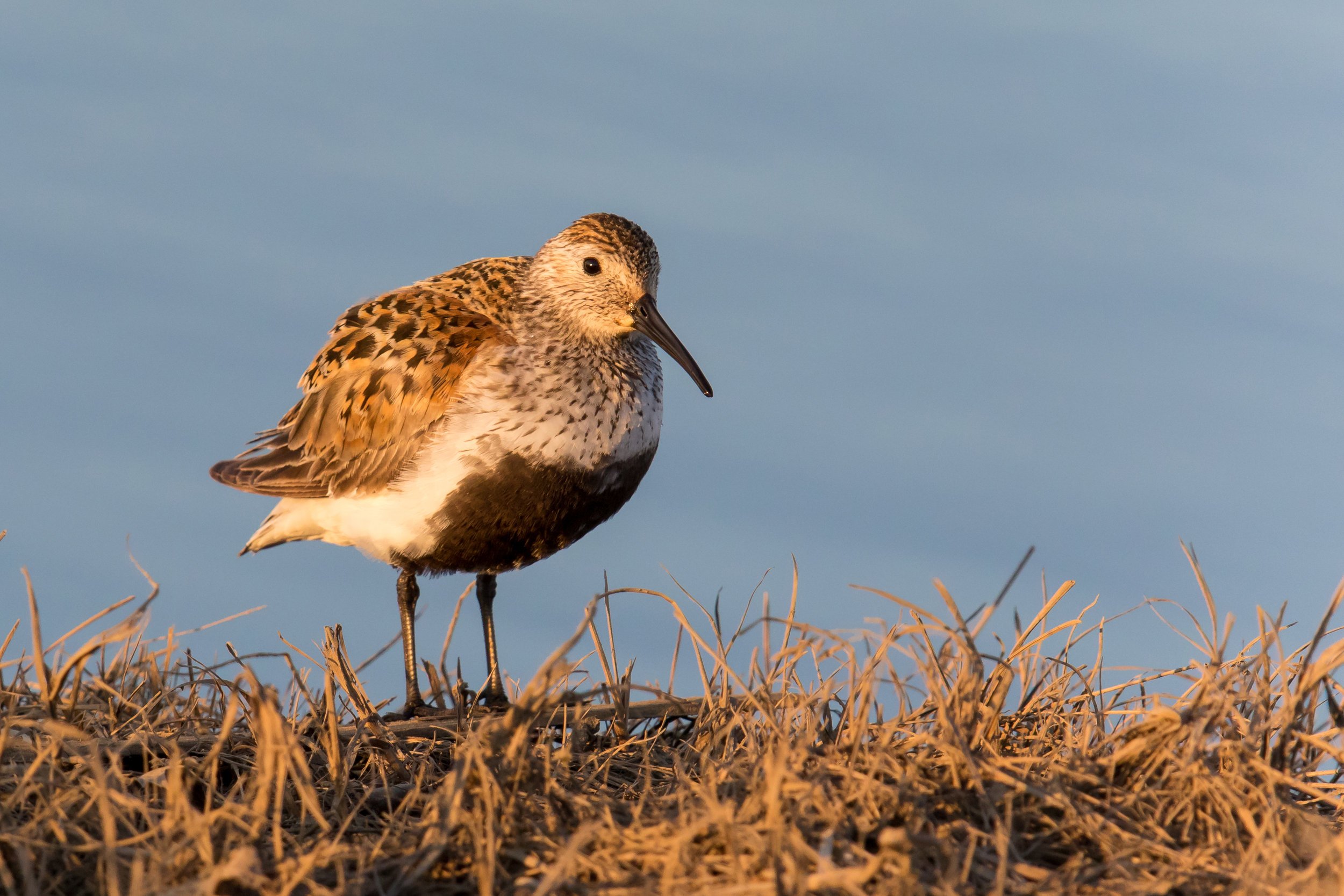Bird of the Month: Dunlin
By Andy McCormick
PC: Mick Thompson (Dunlin)
Scientific Name: Calidris alpina
Length 8.5 in
Wingspan 17 in
Weight 2.1 oz (60 g)
AOU Band code DUNL
Dunlins are hardy birds that winter farther north than any other shorebird. This fall and winter they will be along the Washington coast from late October to early May. Major stopover points for them are the tidal flats and coastal estuaries around Willapa Bay and Grays Harbor and the Samish and Skagit Flats where they forage on marine and freshwater invertebrates by probing a few centimeters into the mud or fine-grained sand. They can also be found on interior seasonal wetlands. About a half million of them migrate along the Pacific coast each year (Warnock et al).
Dunlins belong to the genus Calidris from the Greek kalidris used by Aristotle to describe a speckled waterbird. Alpina refers to the mountains probably to indicate that Dunlins breed in a cold region of the world. The common name is from the Anglo-Saxon dunn, for dark brown, which is descriptive of their brown back in the basic plumage. The breeding or alternative plumage is quite dramatic with its conspicuous black belly patch and rufous back, giving the bird its old name of Red-backed Sandpiper. The black bill is sturdy with a distinctive downward turn at the tip and its legs are black. When feeding, Dunlins look a little hunchbacked.
Dunlins are most often seen in large, tight, well-coordinated flocks with all of the birds seeming to turn in unison. Recent research analyzing movies of flocks frame by frame are able “to show that a turn ripples through a flock just as a cheerleading wave passes through sports fans at a stadium” (Freiderici). Researchers now think that birds need time to learn this behavior and juveniles who cannot keep up with the flock are often the birds that become isolated and prey for falcons. Both the Merlin and Peregrine Falcon have a hunting style characterized by flying directly into the Dunlin flock to split it in order to separate a single individual for attack. During these attacks the flock can stay together but change shape or it can split into two groups leaving some individuals vulnerable.
In May Dunlins begin the northward migration and return to their breeding grounds in the subarctic and arctic tundra. They nest in a shallow scrape in the gravel and typically four olive to blue-green eggs are deposited. Both parents (female at night and male during the day) incubate the eggs for about three weeks. The female departs the nest a few days after the young hatch. The young then feed themselves and are ready to fly in about a month (Kaufman).
Dunlins are one of the world’s most cosmopolitan shorebirds and are found throughout the year. They were hunted to near extinction in the 1800s. Because they fly so tightly together they are vulnerable to multiple kills with one shotgun blast. They are now protected by the Migratory Bird Treaty Act of 1918 and with assistance from wetland conservation measures their numbers have rebounded. Regrettably Dunlin population declines have recently been recorded in central North America. This is most likely in response to the loss of wintering habitat in the United States.


